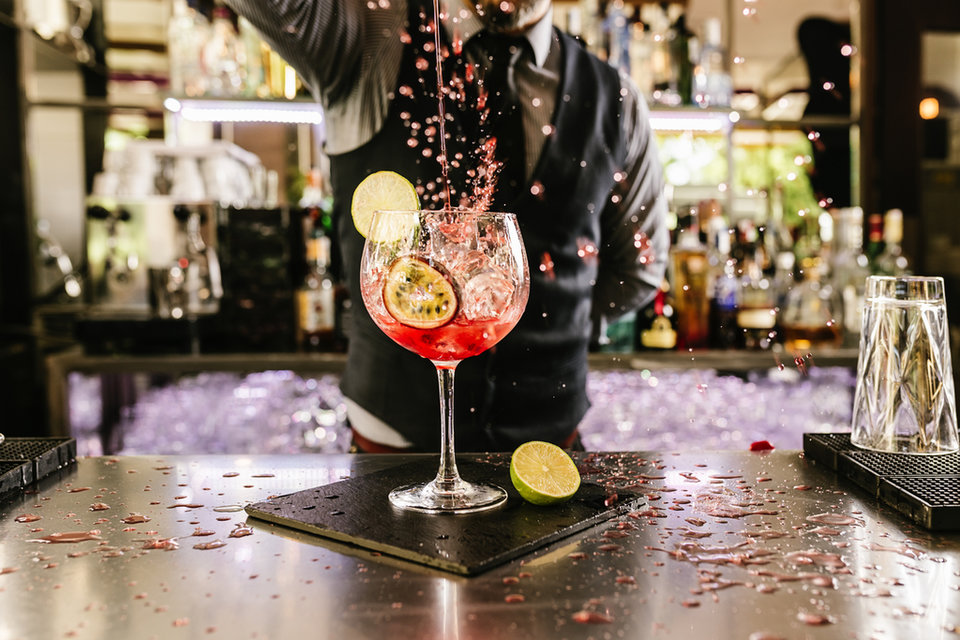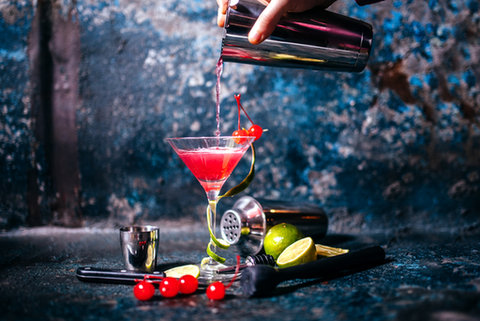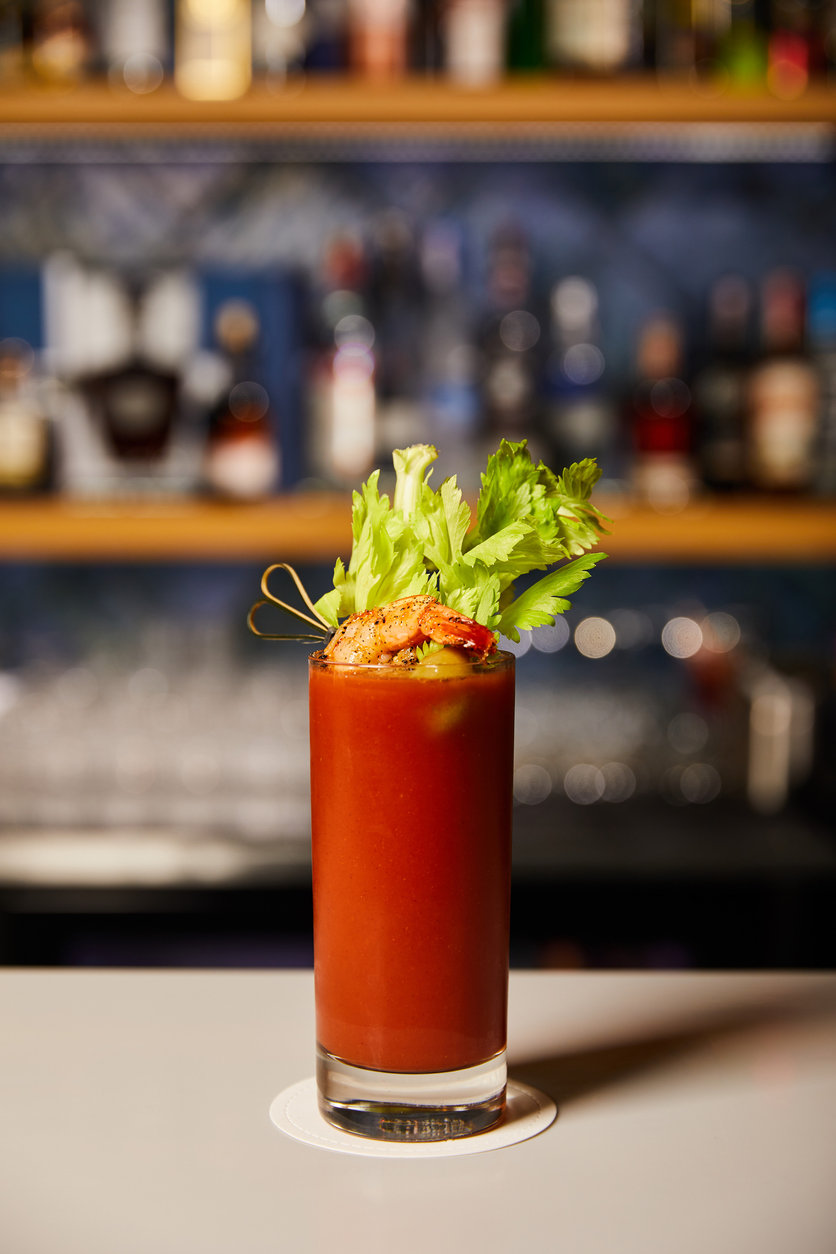Drink
décor
It’s the total opposite of the KISS principle. (That’s the Keep It Simple motto…) For cocktails it’s all about the art of embellishment, adornment and beautification.


Picture the scene: a warm balmy day on a busy restaurant patio with the noise of waves crashing in the distance. Everyone’s holiday dream … A waitron walks past with a tray bearing another table’s order – and it looks SO good! Suddenly the toasted sandwich and beer you ordered doesn’t seem nearly as appealing as the big juicy burger and chips with a neon orange Aperol Spritz the other table are having!
It’s in our nature to covet and envy stuff. How often isn’t it said that we consume with our eyes – be it food, fashion or drinks? We are visual creatures and that’s why mixed drinks and cocktails rely on a certain element of theatre to add visual appeal to the ingredients that make up a drink.
The faint trace of a familiar smell can trigger a powerful emotional reaction. A whiff of vanilla, ginger or nutmeg spice and you’re straight back in your grandmother’s kitchen, baking biscuits like you did when you were just seven years old! Our senses allow us to tap into emotions and memories. It’s one of the strongest reasons for cocktails being a multi-sensory experience. It’s not only about a drink having a certain flavour. A mojito is more than just lime and mint. It’s an incredibly enjoyable memory of a holiday somewhere special, a treasured recollection of the place, the people, what happened and how you felt.

Cocktails are the ideal playground for adventurous and creative souls. The temptation of pretty drinks is the sort of thing which could occupy a psychologist or academic researcher for a long time! The appeal ranges from the receptacle in which it’s served to the profusion of fruit and even the colour of the drink. A Moscow mule, for example, should be drunk out of a copper mug. And the modern innovation of serving gin and tonics in broad, rounded bulb glasses rather than the more typical highball glass has captured the popular imagination because of its look.
But back to garnishes: why do some drinks have a twist, while others have a slice or wheel of whole citrus, or dehydrated citrus – or even an olive or a teeny weeny pickled onion? When it comes to garnishes the first answer is the obvious one – visual appeal. The drink looks pretty and extremely tempting. It triggers a response in the brain that demands satisfaction and wish fulfilment of the “I want that!” sort – just like a child demanding a toy or a treat.
The second is also fairly straightforward: the garnish adds a flavour element to the final drink. Think about maraschino cherries, pineapples, sticks of celery… They do actually serve a purpose. Cocktail or maraschino cherries in a Manhattan work in spirit forward cocktails because the intense sweetness counteracts and mellows the bold nature of the spirit. A celery stalk and slice of fresh lemon in a Bloody Mary adds flavour to the tomato juice, spirit and overall savoury nature of the drink. The same goes for the obligatory pineapple in a Pina Colada, and slice of fresh orange in an Aperol Spritz – they just work.


It’s also why there are so many options when it comes to martinis, for example. A classic martini is made with dry gin and dry vermouth, stirred or shaken with ice, and strained into a martini glass, garnished with an olive.
And that’s when things change … sometimes dramatically. Swop the gin for vodka and it becomes a vodka martini. But swop out the olive garnish for one of those tiny pearl onions and the martini becomes a Gibson!
Add a dash of olive brine to a classic martini and the drink undergoes an identity crisis, becoming a dirty martini. Replace the dry vermouth with Lillet blanc and the drink becomes the urbane British spy, James Bond’s vesper martini!

Insider’s tip for martinis: always green olives. Seldom, if ever, black. It has to do with bitterness. Simply put, the green olives are milder in flavour and more palatable. They don’t dominate the final drink. First step, is to rinse the olives – unless it’s a dirty martini, in which case that salty brine won’t matter. Just run the little green globes under water to clean off the brine. Then it’s a case of either skewering them on a toothpick or dropping them straight into the martini. (And let’s not muddy the waters any further by heading into the territory of stuffed olives – because that’s a whole can of worms. Olive stuffers range from lemon zest to anchovies, and peppers to feta or blue cheese! Let taste and personal choice be the only factor taken into consideration.)
Here’s a little fun game to play: mix up a batch of martinis and pour them into a few glasses. Leave one naked to serve as a taste control. Then garnish the other glasses with an olive, a cocktail onion, and then twists of lemon, orange, lime and even grapefruit. The differences which become apparent – in the same drink! – because of the flavour of the pungent lime, slightly bitter grapefruit, sweeter orange and the lemon will not fail to surprise.
Sometimes, when it comes to decorating a drink, it’s about more than just looks.